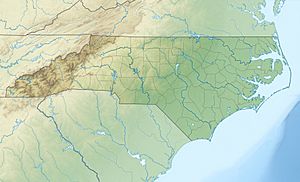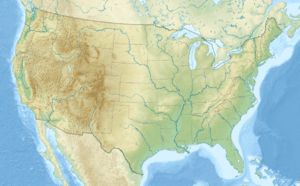Watson Creek (Richardson Creek tributary) facts for kids
Quick facts for kids Watson Creek |
|
|---|---|
|
Location of Watson Creek mouth
|
|
| Other name(s) | Tributary to Richardson Creek |
| Country | United States |
| State | North Carolina |
| County | Union |
| Physical characteristics | |
| Main source | Grassy Creek divide pond about 5 miles north of Watson, North Carolina 563 ft (172 m) 35°06′31″N 080°26′54″W / 35.10861°N 80.44833°W |
| River mouth | Richardson Creek about 1 mile southeast of Watson, North Carolina 398 ft (121 m) 35°04′11″N 080°25′09″W / 35.06972°N 80.41917°W |
| Length | 4.29 mi (6.90 km) |
| Basin features | |
| Progression | generally south |
| River system | Pee Dee |
| Basin size | 6.39 square miles (16.6 km2) |
| Tributaries |
|
| Bridges | Baucom Manor Road, Watson Church Road, Carl Polk Road, Watson Church Road, New Salem Road |
Watson Creek is a small stream, about 4.29 mi (6.90 km) long. It flows into Richardson Creek in Union County, North Carolina. Watson Creek is considered a "1st order tributary." This means it is one of the smallest streams that flows into a larger stream, which then flows into an even bigger river system.
The Path of Watson Creek
Watson Creek starts in a pond. This pond is located about 5 miles (8 kilometers) north of a place called Watson, North Carolina. From its starting point, the creek flows generally south. It travels for a little over 4 miles. Finally, it joins Richardson Creek. This meeting point is about 1 mile (1.6 kilometers) southeast of Watson.
Understanding the Watson Creek Watershed
A watershed is like a big bowl. All the rain and water that falls into this "bowl" drains into a specific river or stream. The Watson Creek watershed covers an area of about 6.39 square miles (16.6 km2). This is the land where all the water eventually flows into Watson Creek.
In this area, Watson Creek and its surroundings get a good amount of rain. On average, about 48.1 inches (122 centimeters) of rain falls each year. A significant part of the watershed is covered by trees. About 32% of the land in the Watson Creek watershed is forested. This means it has many trees and natural areas.



